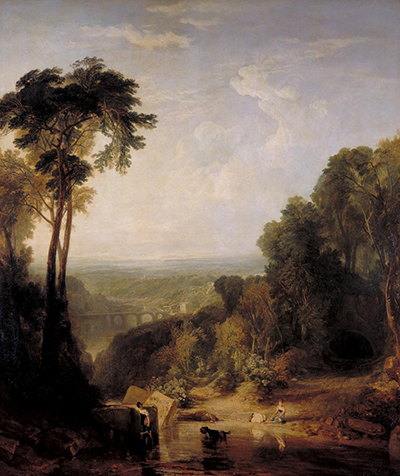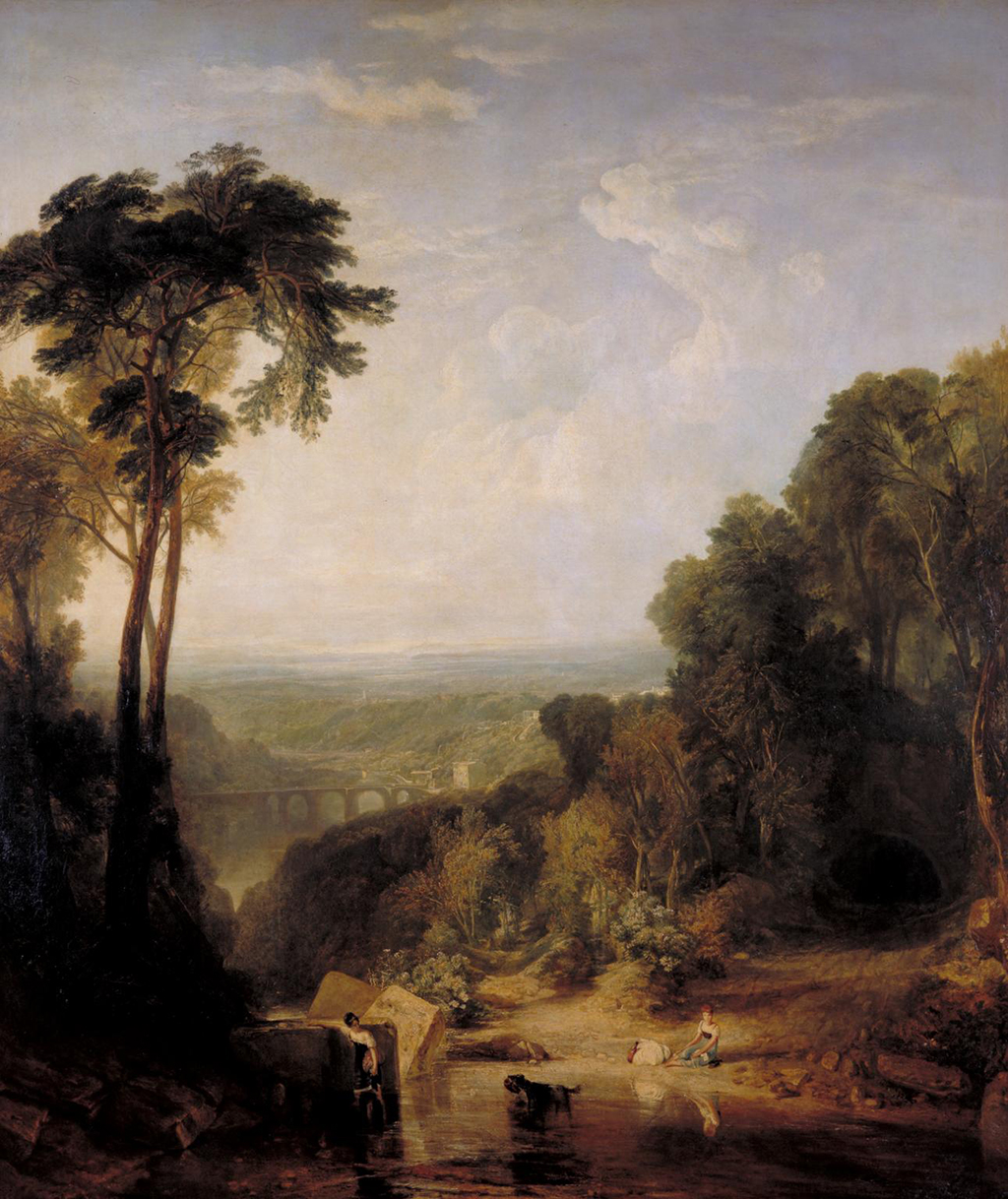 Buy Art Prints Now
Buy Art Prints Nowfrom Amazon
* As an Amazon Associate, and partner with Google Adsense and Ezoic, I earn from qualifying purchases.
It is the level of detail in this 1815 painting from William Turner which is most memorable, which the artist delivering a breathtaking view through an extended valley, including a picturesque bridge stretching out in the far background.
This artwork will remind many of the work of Claude Lorrain, an early French landscape painter who was a part of the Luminist movement, as well as fellow-British painter, John Constable. It is the use of light and reflection that most connected with the French painter of the 17th century and much has been written about his influence on the work of many romanticist artists, including Turner. In terms of Constable, it is the way in which the trees are formed which reminds us of his classical pieces, such as The Hay Wain from 1821, just six years after Turner put together this piece. The huge size of Crossing the Brook means that although the larger image below can get across some of the detail used by the artist, one really needs to see this piece in person in order to truly appreciate the work involved here.
The Tamar Valley is captured here, a beautiful part of Devon that sits just west of the Dartmoor National Park. One can easily claim this to be amongst the most stunning regions of all the UK and Turner himself travelled frequently in order to find such locations for his work. He would experiment with different angles too, often creating drawings and paintings from different viewpoints of the same things. He did this with bridges and also castles, many times. He initially made some preparatory sketches and watercolours several years earlier across the county of Devon. These would have been the base of inspiration for this artwork, though his earlier drawings would have been rough and without much detail.
The scene itself found here features tall trees on both sides of the canvas which was a common technique of 'framing' the content. This also allows dark shadows to be added in this part of the composition, which then allows the rest to be lighter, allowing the contrast to make them stand out even more. There is a single figure playing by the river, with a dog semi-immersed in the water. This provides a relaxing atmosphere, one of calmness as we look out across the rest of the scene. There are no frightening storms here, but a tranquil depiction of the English countryside. There is also very little indication of the role of man in this landscape, other than the bridge which itself is charming and only adds to the nature around it.





